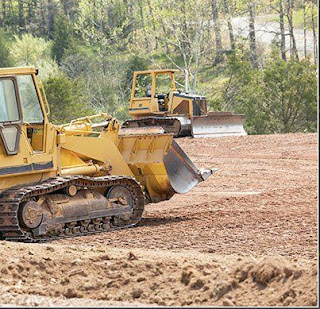Fall Back to Landscaping Basics

Is your yard one big tangle? – During the summer months, everything in your yard goes into overdrive. While people can’t stand the heat, humidity and daily rainstorms, the plants that thrive here locally eat it up. It isn’t unusual for trees to grow as much as a foot or more in the summer down south. If you have bushes, by the end of July they started looking like overgrown sheepdogs in need of a trim. Hopefully, you bided your time by waiting for the shrubbery to stop growing. Only after plant growth has stopped for the year is it safe to prune them. That doesn’t mean that you can’t rake up the fallen leaves or mow the lawn in the meantime. It’s also the perfect time to take a good hard look at your yard to see how to improve it for next Spring’s planting. Here are some tips to help you do just that.
Have you noticed any standing water on your property? - While all plants need water, too much of a good thing can harm them. When the rain falls in sheets as it sometimes does here in the Southeast, leaf litter, dirt and twigs get swept away. This erosion, while natural, tends to form natural barriers that tend to pool water. If you’ve noticed any standing water in your yard after a rain, this is a sure sign that earthen dams are rearranging the hydrology of your property. If left unchecked, this can water-log some of your favorite plants and even backup into your home. The solution is to identify and level these obstacles so the rain can runoff unimpeded. One of the chief culprits in causing water to backup are downspouts. When it rains hard, water can shoot out of these with the force of a fire hose to dig gullies in your garden and sweep earth and twigs away. If your downspouts are causing problems, the solution might be to add more pipe on the end so the force of the water coming out of the spout doesn’t excavate the earth beneath it. You also need to make sure that there are no obstructions like rocks, roots or shrubs for a distance of 10-feet so the water being produced has a chance to runoff.
What goes up… – One way to help channel water and reduce runoff is to build berms. Since Florida is woefully flat, runoff can be an issue. A berm is a mound of soil and fill that’s designed to improve the look and hydrology of a property without creating a dam. Since it’s impractical to raise the level of a backyard, a berm can keep the slope gradual while making it seem like a natural part of the yard. If your yard is pancake flat and/or tends to retain water, talk to a landscaper about adding one or more berms to improve the look and functionality of your yard.
It’s a jungle out there. – Depending on how your property is situated, it’s possible to start off with a lawn in April that turns into a jungle by August. While pruning a yard might be a solution for some gardens, if you have bottomland, you could find yourself imitating Indiana Jones with a machete to try to keep the undergrowth at bay. Should you find yourself experiencing this problem, there are two solutions: Either rent a brush hog to cut back the overgrowth every year or consider hiring a professional landscaper to reconfigure your garden. A professional can show you how to turn a jungle into a paradise by adding walkways and mulch beds that stop the jungle dead in its tracks. They also know which kind of plants do best in wet soil while avoiding those that grow out of control as the summer progresses.
Are you out of your tree? – Another thing a professional can help you get a grip on are the trees in your yard. While trees are great for providing shade, if left unchecked, they can block out the sun to the detriment of other plants. They can also strip the shingles right off your roof. The best time of year to have your trees trimmed is in the Fall and winter months. But before you start trimming your trees, you should have a licensed arborist assess the state of your yard to determine how they affect the rest of your garden, as well as how to help you plan your yard for the coming year. They can also suggest ways to sculpt your backyard so you won’t have such a difficult time maintaining your property even in the high-growth period of the summer.
Timber! – While it’s sometimes necessary to thin out the trees on your property, you don’t want to fell one without considering all the implications. Depending on the age and girth of a tree, cutting one down can not only change the look of your property, it could undermine the rest of your yard. Since some trees have limbs that extend for dozens of feet, felling one could alter the amount of sunshine received by the plants growing beneath them. Face it, some plants like full sun, while others don’t. Unless you understand the full impact that could be caused by removing a tree, consult an arborist before you let someone fire up a chainsaw.





There's an easy way and a hard way to landscaping. The hard way is to try to do it all on your own.
ReplyDelete